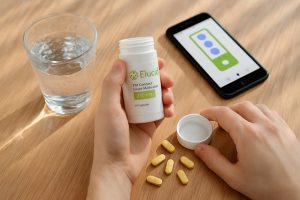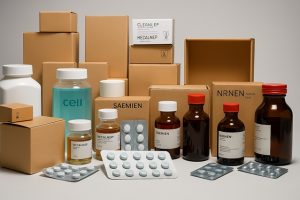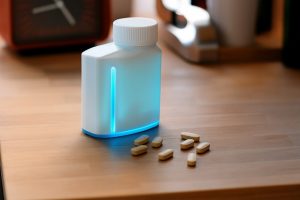When it comes to medicine, safety has always been non-negotiable. But as technology advances, so do the ways we ensure that patients take the correct medications in the right doses, at the right times.
Beyond the traditional pill bottle, innovations in pharmaceutical packaging and child-resistant solutions are making medicine not only safer but also smarter.
This blog explores how these new innovations are revolutionising the way medications are packaged, handled, and consumed.
From modern child-resistant packaging to connected packaging technology, discover how these advancements are shaping the future of healthcare.
Understanding the Importance of Packaging in Pharmaceuticals

Pharmaceutical packaging serves more than just an aesthetic or protective function. It plays a critical role in ensuring patient safety, drug efficacy, and ease of use.
Here’s why it’s so crucial:
- Protecting the product: Packaging ensures that medication remains uncontaminated and effective until it reaches the patient. This is especially vital for drugs sensitive to light, humidity, or temperature.
- Facilitating correct usage: Proper labelling and user-friendly designs help patients take their prescribed doses correctly.
- Prevention: Packaging solutions, particularly child-resistant closures, guard against accidental misuse or ingestion by those who shouldn’t access the medication.
With these essential purposes in mind, innovative pharmaceutical packaging solutions have emerged to address modern challenges.
Smarter Ways to Keep Medicine Safe
1. Child-Resistant Packaging Keeping Little Ones Safe
Children are naturally curious, which can sometimes lead to accidental ingestion of harmful substances. Traditional child-resistant packaging involves mechanisms like squeezable caps or push-and-turn closures, but newer solutions are raising the safety standard even higher.
Examples of Advanced Child-Resistant Technology:
- Press-to-Engage Systems: These require pressure at specific points to open, making it nearly impossible for children to access, but still simple enough for adults.
- Blister Packs with Locking Mechanisms: Instead of tearing the foil off tablets, advanced blister packs include locks that prevent access unless specific steps are followed.
- Intelligent Packaging Solutions with Visual Reminders: These integrate clear, visual cues such as colour-coded sections or pull tabs to ensure adult users feel confident even while managing complex medication regimens.
2. Connected Packaging for Smarter Medication Adherence
Technology is stepping in to help patients take medication as prescribed. Connected packaging uses sensors and digital tools embedded within the packaging to ensure adherence and provide healthcare professionals with valuable insights.
Examples of Connected Packaging:
- Smart Pill Bottles: Equipped with built-in timers or alarms, these bottles remind patients to take their medication. Some models even connect to smartphones and sync with health apps for tracking.
- Data-Tracking Packaging: Collects data on usage habits, enabling healthcare providers to monitor adherence patterns and take corrective action if issues arise.
- QR Codes for User Guidance: Many packs now include scannable QR codes that provide instant access to online instructions, side-effect monitoring tools, and refill reminders.
These technologies promote better patient outcomes by improving adherence and reducing the risk of medication errors.
Sustainability Meets Safety A Greener Approach

Packaging within pharmaceuticals hasn’t always prioritised sustainability. However, with increasing focus on environmental impact, companies are pivoting towards greener options without compromising safety or usability.
3. Eco-Friendly Packaging Options
Biodegradable Materials:
Companies are using biodegradable plastics or recycled paperboard for blister packs and cartons, reducing landfill waste.
Minimal Packaging Design:
Reducing excessive layers of plastic and opting for compact, recyclable materials is another way brands are going green.
Smart Disposal Features:
Some pharmaceutical packaging now includes features that guide users on how to dispose of materials safely, ensuring that medication remnants don’t harm the environment or contaminate water supplies.
Innovations in Labelling Beyond Language Barriers
Packaging isn’t just about the box or bottle; it’s also about communicating critical information to patients. Labelling innovation ensures no one is excluded due to language barriers, vision impairment, or low health literacy.
4. Changes in Drug Labelling:
- Multilingual Labels Easily switch between languages via scannable codes that offer translations.
- Braille Printing Widely available in modern pharmaceutical packaging to support patients with visual impairments.
- Interactive Elements Labels that integrate videos via QR codes explain complicated instructions in an easily digestible format.
These solutions empower users to better understand their medications, enhancing safety and compliance across diverse demographics.
What’s Next in Pharmaceutical Packaging A Peek Ahead

While innovations like child-resistant and connected packaging are impressive, the pharmaceutical industry is always pushing boundaries to enhance safety.
- AI-Powered Packaging AI could further elevate connected packaging, enabling predictive medication reminders based on user habits or distributing alerts for potential interactions with other prescriptions.
- Tamper-Detection Sensors Built into packaging, these sensors could immediately alert patients or healthcare providers if a package has been compromised.
- Personalised Packaging Medication tailored to individual genetic profiles may come with personalised packaging, containing guidance unique to each patient’s needs.
Making the Future a Reality
The pharmaceutical industry’s commitment to safe and innovative packaging reflects a deeper dedication to improving patient well-being. Whether it’s through child-resistant designs, connected devices, or eco-friendly materials, these advancements demonstrate how small improvements and investments in packaging can deliver massive benefits to health outcomes and overall safety.
As technology continues to evolve, medical packaging will undoubtedly become even smarter and more sustainable, empowering patients and healthcare providers alike.
Author Profile

- Blogger by Passion | Contributor to many Business Blogs in the United Kingdom | Fascinated to Write Blogs in Business & Startup Niches
Latest entries
 Must Read NewsOctober 31, 2025How White Hygienic Wall Sheets Brighten Modern Interiors
Must Read NewsOctober 31, 2025How White Hygienic Wall Sheets Brighten Modern Interiors Business AdviceOctober 8, 2025Legal Tech for Small Claims: Making Justice Accessible
Business AdviceOctober 8, 2025Legal Tech for Small Claims: Making Justice Accessible Business AdviceSeptember 3, 2025The End of Apps, the Beginning of Ecosystems: Mobile Banking in 2025
Business AdviceSeptember 3, 2025The End of Apps, the Beginning of Ecosystems: Mobile Banking in 2025 Must Read NewsAugust 13, 20257 Simple Home Upgrades That Boost Comfort in Every Season
Must Read NewsAugust 13, 20257 Simple Home Upgrades That Boost Comfort in Every Season


